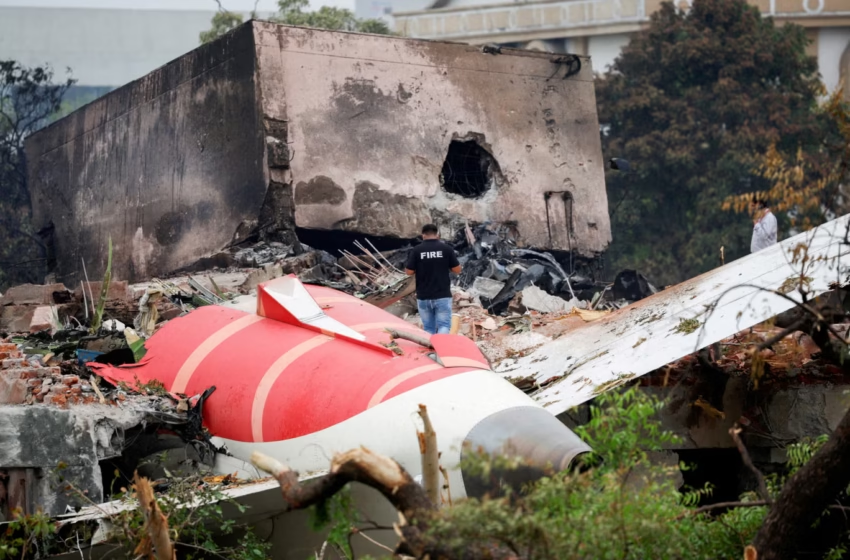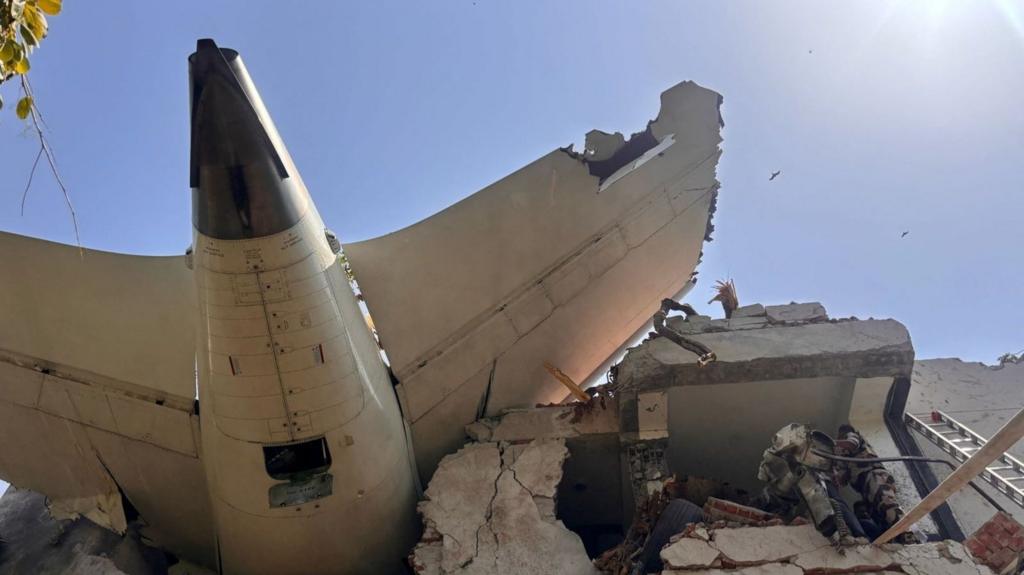Air India crash: engines lost power after fuel cutoff, early report reveals

Aftermath of the Air India crash during takeoff in Ahmedabad (Adnan Abidi/Reuters)
A preliminary investigation into the tragic crash of Air India flight AI171 last month has revealed that fuel to both engines was cut off seconds after take-off — a critical factor in the disaster that killed 260 people in Ahmedabad.
The Boeing 787-8 Dreamliner, bound for London, crashed into a residential area shortly after departing from Sardar Vallabhbhai Patel International Airport on 12 June. All 241 passengers and 12 crew members died, along with 19 people on the ground. It marks India’s deadliest aviation accident in over a decade.
Fuel Switches Moved to Cutoff
According to India’s Aircraft Accident Investigation Bureau (AAIB), the aircraft reached a maximum indicated airspeed of 180 knots at 08:08:42 UTC, just before both engine fuel switches were moved to the “cutoff” position.
“The engine 1 and engine 2 fuel cutoff switches transitioned from RUN to CUTOFF position one after another with a time gap of 1 second,” the report stated.
“The engine N1 and N2 began to decrease from their takeoff values as the fuel supply to the engines was cut off.”
The aircraft began to lose altitude immediately and crashed before clearing the airport’s boundary wall.
Conversation Between Pilots
The cockpit voice recorder captured one pilot asking the other why the fuel was cut off.
“The other pilot responded that he did not do so,” the report noted.
The report did not clarify which pilot made which statement, nor who issued the distress call — “mayday, mayday, mayday” — shortly before impact.
Pilot Details and Early Theories
Captain Sumeet Sabharwal, 56, an experienced Air India instructor with over 15,000 flying hours, was in command. First Officer Clive Kunder, 32, had logged 3,403 hours.
Investigators have not yet confirmed how or why the fuel cutoff switches were activated. No fault has been attributed to Boeing or GE Aerospace, the engine manufacturer.
“You can’t bump them and they move,” said aviation safety expert John Cox.
He explained that fuel cutoff switches are designed to require deliberate action. They are typically used after landing or during emergencies, such as an engine fire — which the report did not indicate occurred.
“If they were moved because of a pilot, why?” asked aviation analyst Anthony Brickhouse.
“A pilot would normally never turn the switches off in flight, especially as the plane is starting to climb,” added former pilot and analyst John Nance.
Partial Engine Recovery
The report noted that one of the engines began to recover after the fuel cutoff:
“Engine 1’s core deceleration stopped, reversed and started to progress to recovery.”
However, engine 2 could not regain sufficient power and “could not arrest core speed deceleration.”
Air India Responds
“Air India stands in solidarity with the families and those affected by the AI171 accident,” said an airline spokesperson.
“We continue to mourn the loss and are fully committed to providing support during this difficult time.”
The airline stated it was cooperating fully with regulators and authorities, while refraining from further comment due to the active investigation.
Crash Site and Victims
The crash destroyed five buildings, including a medical student hostel near Byramjee Jeejeebhoy medical college. Both black box recorders were recovered within days.
The report dismissed the possibility of a bird strike, noting “no significant bird activity” near the flight path.
On board were 169 Indian nationals, 53 Britons, seven Portuguese citizens, one Canadian, and 12 crew.
The Sole Survivor
British national Vishwash Kumar Ramesh was the only survivor. He managed to escape through a tear in the fuselage. His brother Ajay, who was also on the flight, did not survive.
“It felt like it was stuck in the air … lights began flickering … it suddenly slammed into a building and exploded,” Ramesh recalled from hospital.
“I can’t believe how I came out of it alive. For a moment, I felt like I was going to die too, but when I opened my eyes and looked around, I realised I was alive. I still can’t believe how I survived.”
“I managed to unbuckle myself, used my leg to push through that opening, and crawled out. I saw people dying in front of my eyes – the air hostesses, and two people I saw near me … I walked out of the rubble.”
Last month, he helped carry his brother’s coffin to the crematorium in their hometown of Diu.
International Involvement
The US National Transportation Safety Board (NTSB) and the Federal Aviation Administration (FAA) are assisting with the investigation. The FAA confirmed it is committed to acting on any safety issues identified.
No recommendations have yet been made regarding the broader Boeing 787 fleet or GE engines.
Boeing has pledged full cooperation. GE Aerospace has yet to comment publicly.



